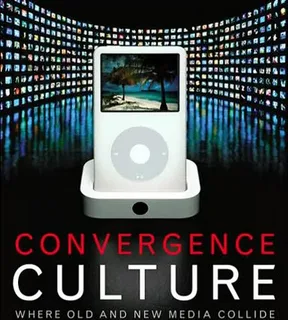In an increasingly globalized world, the term “cultural convergence” has become a buzzword. It refers to the process through which cultures interact, blend, and influence each other, often leading to shared practices, values, and ideas. While some see it as a symbol of unity and innovation, others worry about the potential loss of cultural identity. Let’s dive deeper into what cultural convergence means, its impacts, and its role in shaping the modern world.
What Is Cultural Convergence?
Cultural convergence occurs when different cultures come into contact and begin to share and adopt each other’s practices and ideas. This phenomenon is often driven by globalization, advancements in technology, and increased human interaction through trade, migration, and media.
Key Drivers of Cultural Convergence
- Globalization: The interconnectedness of economies, politics, and societies has made cultural exchange inevitable.
- Technology: The internet, social media, and digital communication have broken down geographical barriers, making cross-cultural interactions instantaneous.
- Travel and Migration: People moving across borders for work, education, or tourism bring their cultural practices with them, leading to exchanges and adaptations.
- Media and Entertainment: Movies, music, and other forms of entertainment often transcend cultural boundaries, introducing global audiences to new ideas and traditions.
Examples of Cultural Convergence
1. Food
Food is one of the most visible examples of cultural convergence. Fusion cuisines—such as Tex-Mex, which combines Texan and Mexican culinary traditions—highlight how different cultures influence each other. Popular dishes like sushi, pizza, and tacos have become global staples, often adapted to suit local tastes.
2. Language
Languages frequently borrow words and phrases from one another. English, for example, has adopted terms like “karaoke” from Japanese and “schadenfreude” from German. Similarly, the widespread use of English as a global lingua franca exemplifies linguistic convergence.
3. Fashion
Fashion trends often draw inspiration from various cultures. Traditional garments like the Indian sari or the Chinese qipao have been reinterpreted in modern fashion, blending traditional aesthetics with contemporary designs.
4. Technology and Business
Cultural convergence is also evident in global business practices. For instance, companies like McDonald’s adapt their menus to include local flavors while maintaining their global identity, creating a balance between standardization and cultural sensitivity.
The Pros of Cultural Convergence
1. Fostering Unity
Cultural convergence can create a sense of global community. Shared practices and values help break down barriers, promote mutual understanding, and encourage collaboration.
2. Innovation
When cultures intersect, they often give rise to new ideas, products, and art forms. This blending of traditions can lead to creative solutions and fresh perspectives.
3. Accessibility
Cultural convergence makes it easier for people to experience and appreciate the richness of other cultures without traveling far. Whether it’s through food, music, or film, global exposure is now more accessible than ever.
The Challenges of Cultural Convergence
1. Loss of Cultural Identity
One of the main concerns is that smaller, less dominant cultures may lose their distinctiveness as they adapt to global influences. This phenomenon, often called “cultural homogenization,” can erode unique traditions and practices.
2. Cultural Appropriation
While cultural exchange can be enriching, it’s important to respect the origins and meanings of cultural elements. Misappropriation or commodification can trivialize or misrepresent important traditions.
3. Power Imbalances
In some cases, cultural convergence reflects unequal power dynamics, where dominant cultures impose their values and practices on others, overshadowing local traditions.
Balancing Convergence and Preservation
While cultural convergence is inevitable, it’s essential to balance global integration with the preservation of cultural heritage. Here’s how we can achieve this:
- Promote Cultural Education: Understanding the history and significance of different traditions fosters respect and appreciation.
- Support Local Art and Practices: Encourage the preservation of local crafts, languages, and customs through funding and education.
- Encourage Ethical Practices: Ensure cultural exchange happens with mutual respect, avoiding exploitation or misrepresentation.
- Celebrate Diversity: Embrace both global influences and local traditions to create a richer, more inclusive cultural landscape.
Conclusion
Cultural convergence is a double-edged sword. While it brings people together and fosters innovation, it also challenges the preservation of unique cultural identities. By approaching cultural exchange with mindfulness and respect, we can create a world that celebrates both unity and diversity.




